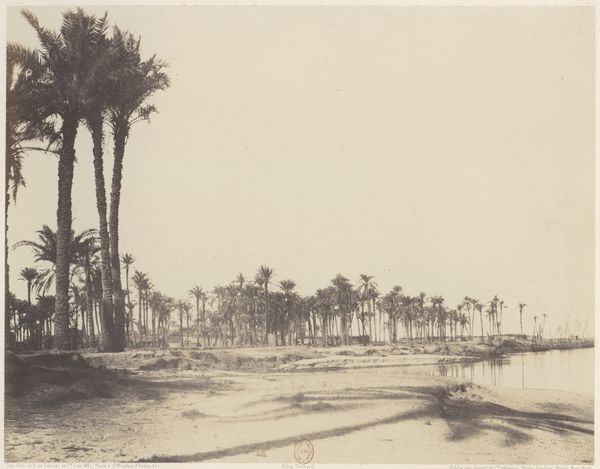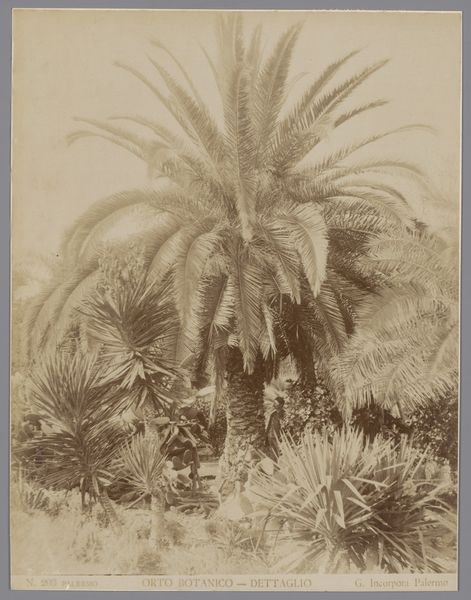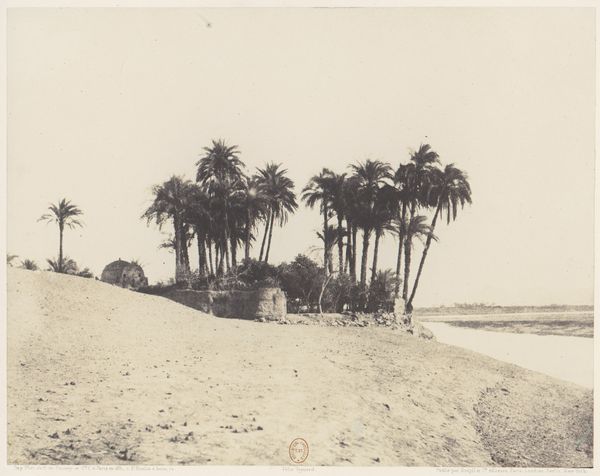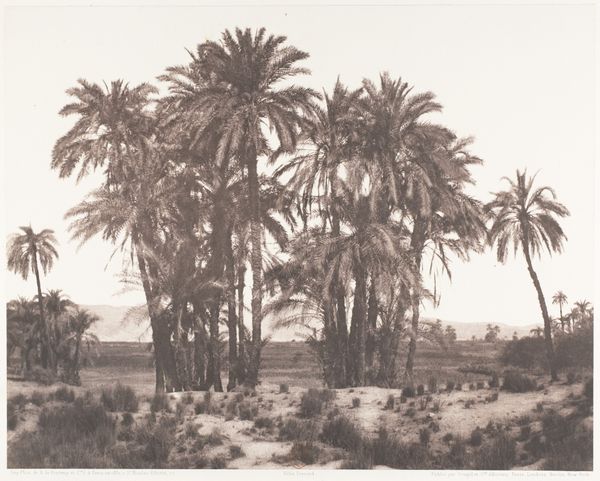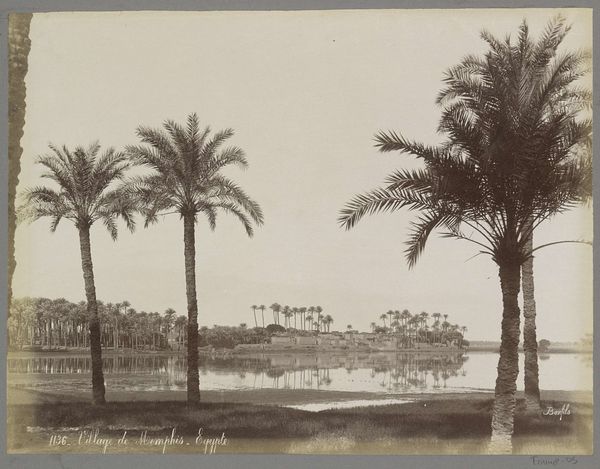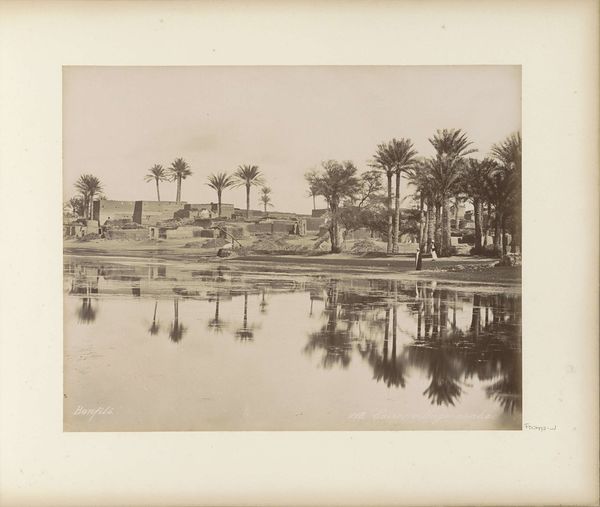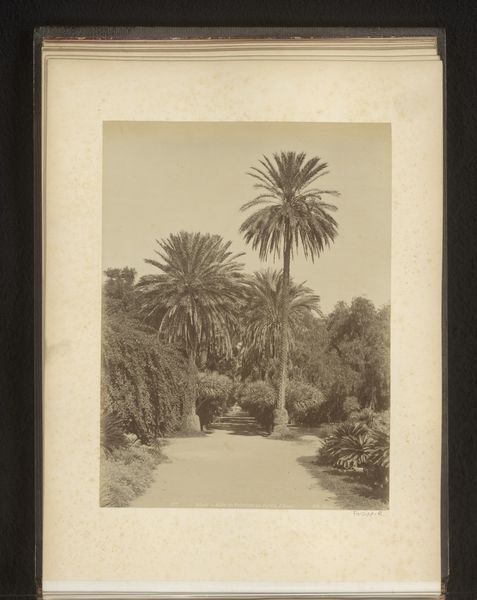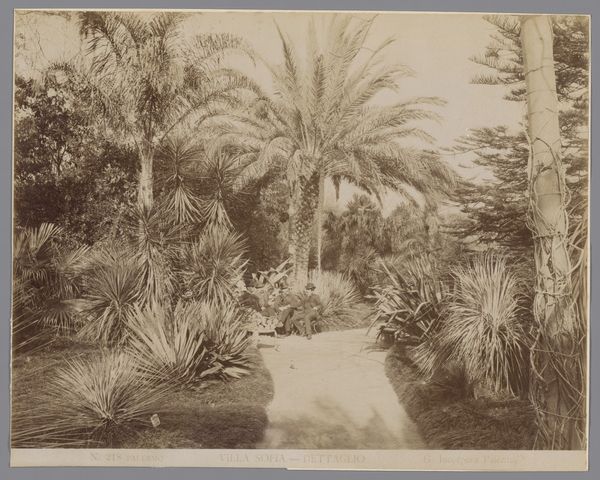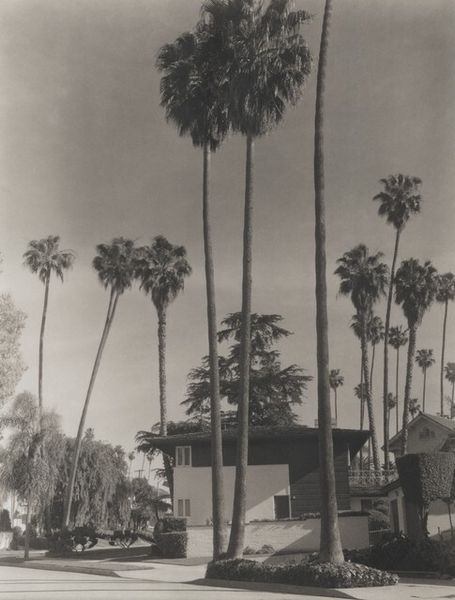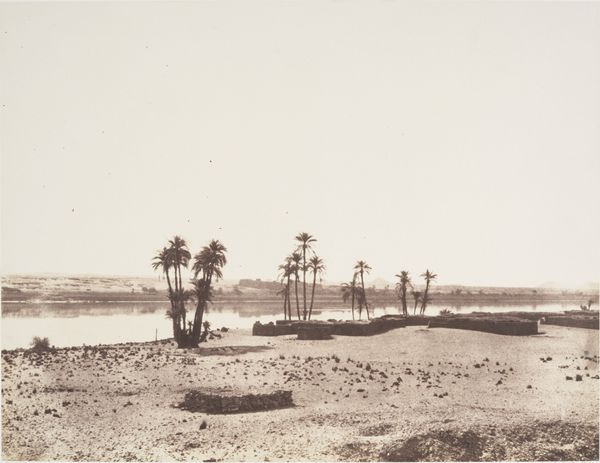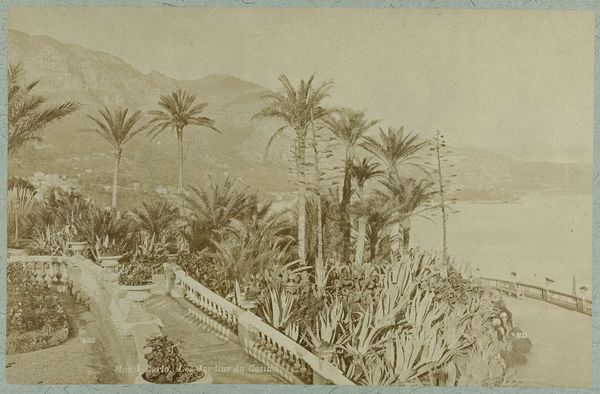
Copyright: Public Domain
Curator: This is "Arabs on the Riverbank," a Gelatin Silver Print created around 1910. It’s attributed to Rudolf Franz Lehnert. Editor: My initial reaction is one of subdued stillness. There's something so quiet and contemplative about the light, almost monochromatic and dreamlike. Curator: Lehnert, along with Ernst Landrock, produced numerous images reflecting an Orientalist aesthetic during this period. We see examples of their work within museum collections that grapple with such categorization to this day. This is an excellent specimen reflecting these contextual problems. Editor: You know, I'm immediately struck by how the technical choices – the gelatin silver print process – impact our reading. The stark contrast, the graininess... it lends a certain air of authenticity, even though, as we know, these images were often staged. Think about how staged they are for mass consumption, which has to be at the forefront. Curator: Absolutely. The labor involved in staging these photographs and producing prints like these played directly into the colonial power structures of the era. These photographers employed local labor. Further, we must discuss the cost and accessibility of photographic materials as commodities for travelers in the region, highlighting consumption in ways that were meant to be inaccessible to those who appear in the picture. Editor: It’s difficult to look at photographs from this period without considering the complex social dynamics at play. I see the figure in the photograph appearing almost diminutive when set against the backdrop of the tall palms. Was this romanticized, idealized presentation a factor that prompted travelers from the West to visit these far-off lands? Curator: These photos, along with other visual depictions from paintings to postcards, greatly shaped Western perceptions. They established visual tropes of North Africa and the Middle East for audiences unfamiliar with those regions. Furthering consumption patterns of "goods" and ideals. Editor: Examining Lehnert's techniques and use of materials gives insight into the construction of the image and its role within the wider context of colonial and orientalist representation. This also underscores how such images can circulate through different social spheres. The original print now lives here at the Städel Museum, as one might view a prized artifact. Curator: A lasting commentary then on the image itself. Editor: Precisely, and that tension makes the artwork all the more intriguing.
Comments
No comments
Be the first to comment and join the conversation on the ultimate creative platform.

